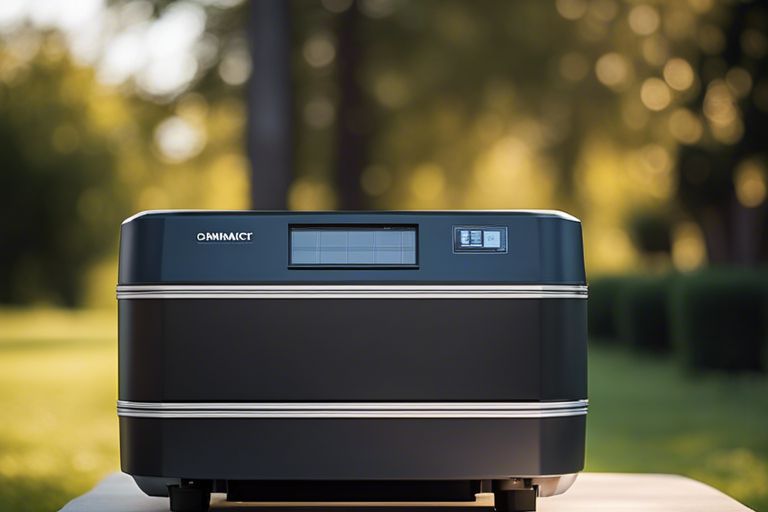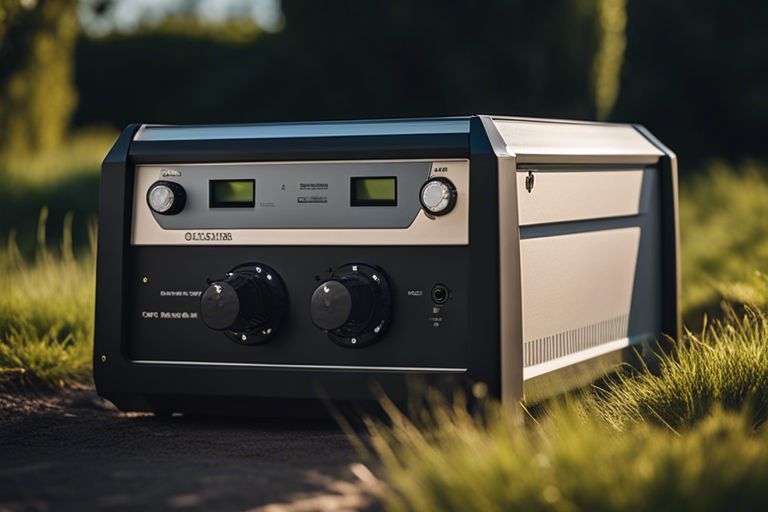With the increasing shift towards sustainable energy sources, you may be considering investing in a solar generator. Wondering how long it will last? Let’s explore the lifespan of solar generators in this informative blog post. Understanding the longevity of these eco-friendly power solutions can help you make an informed decision for your energy needs.
Key Takeaways:
- Life Span: A solar generator can last between 15 to 30 years, depending on factors like quality of components, maintenance, and usage.
- Battery Replacement: Batteries will likely need replacement every 5 to 10 years, but the solar panels and inverter can last much longer with proper care.
- Maintenance: Regular maintenance and monitoring are key to maximizing the lifespan of a solar generator system, ensuring it continues to function efficiently for years to come.
Factors Affecting Solar Generator Lifespan
While solar generators are designed to be durable and long-lasting, several factors can influence their lifespan. It’s imperative to consider these factors to ensure your solar generator operates efficiently for years to come.
- On the How Long Does a Solar Generator Last in a Power Outage? page, you can find more detailed information about factors affecting the lifespan of a solar generator:
Quality of Components
On a solar generator, the quality of components plays a crucial role in determining its lifespan. High-quality batteries, inverters, and solar panels can significantly impact how long your generator lasts. Investing in a solar generator with superior components can enhance its longevity and overall performance.
Maintenance and Repair
Quality maintenance and timely repair are imperative for prolonging the lifespan of your solar generator. Regularly inspecting and cleaning your generator, as well as addressing any issues promptly, can prevent minor problems from escalating. Ensure you follow the manufacturer’s guidelines for maintenance and seek professional assistance for repairs when needed.
Repairing any faulty components or connections promptly can prevent further damage and extend the overall lifespan of your solar generator.
Environmental Conditions
Lifespan of a solar generator can be greatly affected by the environmental conditions it’s exposed to. Factors such as extreme temperatures, humidity, and exposure to elements can impact the efficiency and durability of your generator. To maximize its lifespan, place your generator in a sheltered location away from harsh weather conditions and regularly check for any signs of wear and tear.
Generator performance may diminish quicker in challenging environmental conditions, so it’s crucial to protect your solar generator from such elements to maintain its longevity.
Average Lifespan of Solar Generators
Industry Standards
On average, solar generators are built to last for several years. Industry standards suggest that a well-maintained solar generator can have a lifespan of around 20 to 30 years. However, this figure can vary based on the quality of components used in the construction of the generator and how well it is cared for over time.
Manufacturer Claims
An important factor to consider when estimating the lifespan of a solar generator is the manufacturer’s claims. Manufacturers often provide an estimated lifespan for their products, which can range from 10 to 25 years. These claims are based on the quality of the materials used, the design of the generator, and the expected performance over time.
Claims made by manufacturers should be taken with a grain of salt, as real-world conditions can impact the actual lifespan of a solar generator. Factors such as weather exposure, maintenance practices, and usage patterns can all play a role in how long your generator will last.
Real-World Experience
Solar generators in real-world settings have shown varying lifespans based on usage and maintenance. Some users have reported their solar generators lasting well beyond the manufacturer’s claims, while others have experienced shorter lifespans due to neglect or harsh environmental conditions.
For instance, a solar generator that is regularly serviced, kept in a protected environment, and used within its recommended capacity is likely to have a longer lifespan than one that is subjected to extreme temperatures, overworked, or left to deteriorate without proper care.

Battery Life Expectancy
Type of Batteries Used
All solar generators come equipped with batteries that store the energy collected from the sun. The type of batteries used in your solar generator will have a significant impact on their lifespan. Some common types of batteries used in solar generators include lead-acid, lithium-ion, and nickel-cadmium batteries. Each type has its pros and cons in terms of durability and longevity.
Depth of Discharge
Any solar generator user must consider the depth of discharge (DoD) when it comes to battery life expectancy. DoD refers to the percentage of the battery that has been discharged relative to its total capacity. For example, if you discharge a battery to 50% of its total capacity before recharging it, you are using a DoD of 50%. Ensuring you don’t regularly discharge your batteries to their full capacity can significantly extend their lifespan.
Depth of discharge is crucial because the deeper you discharge a battery, the more stress you put on it, ultimately shortening its lifespan. By avoiding deep discharges and keeping the DoD low, you can prolong the life of your solar generator’s batteries.
Charging Cycles
The number of charging cycles a battery can endure is another crucial factor in determining its overall lifespan. Charging cycles refer to the number of times a battery can be charged and discharged before its performance starts to degrade. Generally, the more charging cycles a battery is rated for, the longer it will last before needing replacement.
The type of charging cycles a battery can handle is influenced by how frequently you use and recharge your solar generator. The more frequently you cycle the battery, the faster it will reach the end of its lifespan. By being mindful of your charging habits and ensuring not to overcharge or over-discharge your batteries, you can maximize the number of charging cycles they can endure.

Inverter and Charge Controller Longevity
After What is the Lifespan of a Portable Solar Generator?, it’s important to consider the longevity of the inverter and charge controller in your solar generator setup.
Inverter Durability
The inverter in your solar generator is crucial for converting the DC power from the solar panels into usable AC power for your devices. With proper care and maintenance, inverters can last anywhere from 10 to 20 years, depending on the quality of the components used in its construction.
Charge Controller Reliability
Inverters play a vital role in regulating the power flow from the solar panels to the battery in your solar generator. Quality charge controllers can last up to 10 years or more, ensuring the longevity and efficiency of your solar power system. It’s necessary to invest in a reliable charge controller to protect your batteries from overcharging or discharging, maximizing their lifespan and performance.
It’s crucial to choose high-quality components for your solar generator setup, including durable inverters and reliable charge controllers, to ensure the longevity and efficiency of your system. Regular maintenance and monitoring of these components can help extend their lifespan and optimize the performance of your solar generator.
Solar Panel Degradation
Unlike How Long Does a Solar Generator Last?, solar panels are built to last for many years. However, over time, they can experience efficiency loss and physical damage which can affect their performance.
Efficiency Loss Over Time
Any solar panel system will experience some efficiency loss over time due to factors like dust accumulation, shading, and aging of the materials. Typically, solar panels degrade at a rate of about 0.5% to 1% per year. This means that after 25 years, your solar panels might be operating at around 75% to 87.5% of their original efficiency.
Physical Damage and Wear
Efficiency is not the only concern when it comes to the lifespan of a solar generator. Physical damage and wear can also affect the longevity of your solar panels. Extreme weather conditions, like hailstorms or high winds, can cause cracks or breaks in the panels, reducing their effectiveness. Regular maintenance and monitoring can help prevent and address these issues, ensuring your solar panels last as long as possible.
Understanding the factors that contribute to solar panel degradation can help you make informed decisions about the maintenance and care of your solar generator, ultimately extending its lifespan and maximizing its efficiency.
Extending the Life of Your Solar Generator
Regular Maintenance Tasks
Maintenance is crucial in ensuring the longevity of your solar generator. Regularly checking and cleaning the solar panels, inspecting the wiring for any damage, and ensuring the battery is functioning optimally are important tasks. By keeping your solar generator well-maintained, you can increase its lifespan and efficiency.
Upgrades and Replacements
Replacements and upgrades may be necessary to keep your solar generator running smoothly over the years. Upgrading to more efficient solar panels or replacing worn-out parts can improve performance and extend the lifespan of your system. With advancements in technology, upgrading certain components of your solar generator can help keep it up to date and increase its longevity.
With proper care and the occasional replacement of key components, your solar generator can last for many years, providing you with clean and reliable energy.
Proper Storage and Handling
Solar generators should be stored in a dry and well-ventilated area when not in use. Protecting your system from extreme temperatures and moisture can prevent damage and ensure its longevity. Additionally, handling your solar generator with care, especially during transportation or installation, can help avoid accidents and prolong its lifespan.
For instance, storing your solar generator in a temperature-controlled environment and using protective covers during transport can safeguard it from potential harm and increase its durability.

Final Words
Following this exploration of how many years a solar generator will last, it is evident that with proper maintenance and care, your solar generator can last anywhere from 10 to 25 years. By ensuring you follow the manufacturer’s guidelines, you can maximize the lifespan of your solar generator and continue to benefit from clean and renewable energy for many years to come.
FAQ
Q: How long will a solar generator last?
A: The lifespan of a solar generator can vary depending on the quality of the components used and the maintenance of the system. On average, a well-maintained solar generator can last anywhere from 20 to 30 years.
Q: What factors can impact the lifespan of a solar generator?
A: Several factors can affect the longevity of a solar generator, including the quality of the solar panels, the efficiency of the inverter, the type of battery used, the frequency of maintenance, and the environmental conditions where the system is installed.
Q: How can I extend the lifespan of my solar generator?
A: To extend the lifespan of your solar generator, it is important to invest in high-quality components, perform regular maintenance checks, keep the system clean, provide proper ventilation, avoid overcharging and deep discharging the batteries, and protect the system from extreme weather conditions.
